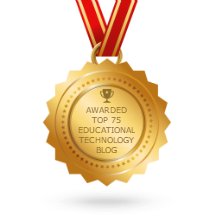An item from the folks at the Digital Learning Collaborative.
By Kim Loomis, K-12 Educational Strategist at i3DigitalPD
In the evolving landscape of K-12 education, the terminology we use to describe innovative learning models is more than mere semantics; it shapes perceptions, expectations, and outcomes. At the recent Digital Learning Annual Conference (DLAC), a recurring theme emerged: a palpable confusion surrounding the term “hybrid learning,” particularly when contrasted with “blended learning.” This distinction is not just academic—it’s fundamental to understanding the future of educational practices. A visit to schools in the Chicago area further illuminated the diverse interpretations and implementations of these models, sparking a vital discussion. Is it time to reconsider our vocabulary? Perhaps “flexible” learning is a more apt descriptor for the education model combining offsite online learning with onsite, teacher-led instruction.
Blended Learning: Traditional School Day
To dissect the distinction, let’s first clarify what we mean by “blended learning.” This approach integrates online educational materials and opportunities for interaction online with traditional place-based classroom methods. It requires the physical presence of both teacher and student in the school building every day of the week. Blended learning is a systematic integration of digital and physical learning environments to enhance educational outcomes in the traditional school day and building. Blended learning is a pedagogy that traditional schools use to infuse digital learning within the traditional school system. The funding and accountability perspective maintains the same since blended pedagogy is adopted within the traditional school day (e.g. seat time) and setting.
Hybrid Learning: Mixed Onsite and Offsite Learning
Hybrid learning, as it’s commonly misunderstood, is often used interchangeably with blended learning. However, the nuances that distinguish it are significant. True hybrid learning models offer a more flexible approach that combines online and in-person education. Hybrid distinguishes itself by allowing students to alternate between attending classes on-site and working online remotely, such that students can earn credits and the school maintains funding while students “work from home.” Hybrid learning provides a structure that can adapt to various schedules of onsite attendance, plus one or more days of “working from home.” Some states allow hybrid learning with relatively limited impacts on funding and accountability; other states prohibit hybrid learning either explicitly or by reducing funding. In other states, this mixed onsite and offsite learning (reducing physical seat time), may require legislative variances and result in reduced funding.
The confusion is even more murky when a school adopts some hybrid classes into their schedule, versus adopting a hybrid program school-wide. Hybrid schools “intentionally” utilize online content for remote learning time allowing teachers to complement digital learning with higher-order projects, hands-on learning experiences, and quality peer-to-peer interactions in the traditional classroom.
Source: Digital Learning Collaborative: 2022 Snapshot
As pointed out in the Reflections from DLAC (March 21, 2024) some independent study programs may fit our definition of hybrid schools—but few would call themselves hybrid schools. They deliver online, onsite, and hybrid courses, including dual credit, but the varied modalities aren’t front of mind for them.
The Case for “Flexible” Learning
During a site visit to the Chicago area, schools offered three types of classes: traditional, blended, and online. I was confused, in today’s technological world all traditional classrooms should be blended – right? It became evident that the Chicago area classes labeled as “blended” were, in fact, embracing hybrid learning principles. The “blended” classes, much like a college campus, met in person only two days a week, relying on online instruction to complement the physical classroom time. This observation begs the question: Are we mislabeling our K-12 educational models, thereby clouding understanding and implementation?
Referring to a mixed model of traditional class days plus remote online learning days as “flexible” learning might offer a clearer, more accurate description. It highlights the adaptability of the varied schedule of learner needs and the seamless integration of online and onsite learning. This term can encompass the essence of what these innovative schools are achieving: an educational approach that fluidly combines the strengths of both traditional and digital realms to cater to the diverse needs of today’s students.
Moving Forward: Clarity and Flexibility
As educators, policymakers, and stakeholders continue to navigate the complexities of modernizing education, our terminology must evolve to accurately reflect the innovations at hand. The distinction between blended and hybrid—or, perhaps more aptly, flexible or mixed schedule—learning is not merely semantic. It represents a deeper understanding of how we can best serve the diverse learning needs of all students.
Adopting clear, descriptive language will enable educators to share strategies, challenges, and successes more effectively, fostering a collaborative environment that benefits from shared knowledge. As we move forward, let us embrace the flexibility not only in our educational models but in the language we use to describe them. In doing so, we can ensure that every student has access to a learning path that meets them where they are, helping them to reach their full potential.
So… what’s in a name? Quite a lot, as it turns out. The terms we choose to describe our educational models shape our perceptions and our realities. As we continue to innovate in the field of K-12 education, let’s select our words with care, ensuring they reflect the adaptability and inclusiveness at the heart of our teaching philosophies.
View email in browser
Evergreen Education Group · 700 Main Ave Ste E · Durango, CO 81301-5437 · USA















 12 Unique Blogs Are Written By Professors
12 Unique Blogs Are Written By Professors